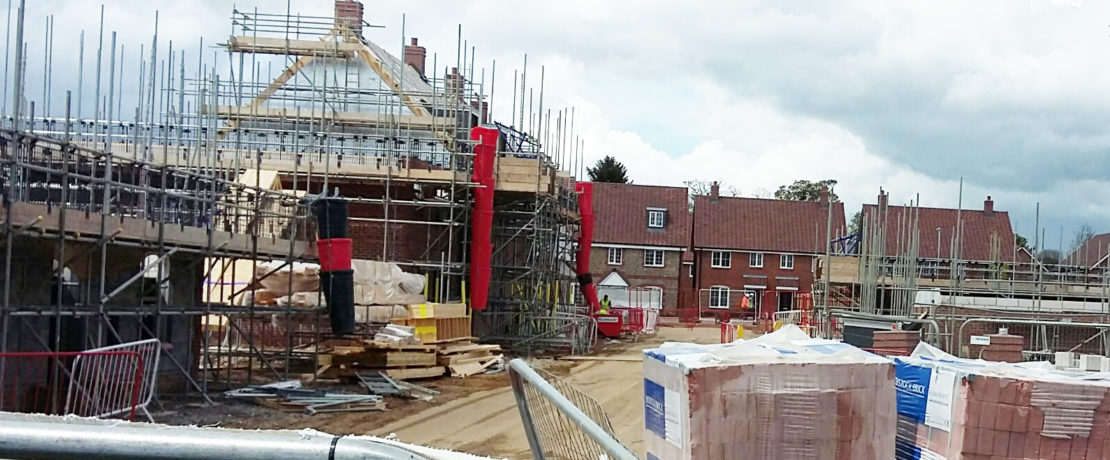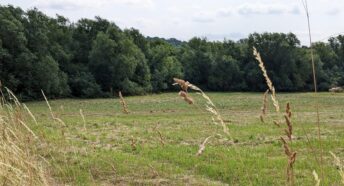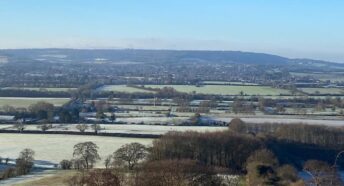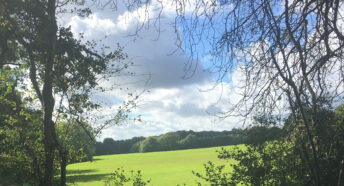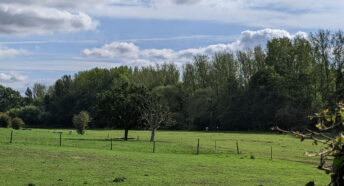London and Home Counties set to lose 48,000 acres of protected Green Belt
New research by the London Green Belt Council shows the scale of development planned for the London Metropolitan Green Belt has more than doubled in just six years.
The Green Belt in Hertfordshire is part of the London Metropolitan Green Belt. It was established in the 1950s to prevent urban sprawl and ensure the countryside would be kept permanently open.
The new report entitled Safe Under Us? The continued shrinking of London’s local countryside highlights that councils in Outer London and the Home Counties are planning to allow developers to build on some 75 square miles of protected Green Belt countryside and open spaces. This is despite the vital role that open countryside plays in climate change mitigation and carbon sequestration, providing agricultural land for food production, and having access to nature for health and well-being and public recreation. Developing our open countryside is a totally unnecessary loss of green land as more than enough brownfield land is available to meet all of the region’s genuine housing needs, and the number of brownfield sites continues to increase.
Altogether the amount of Green Belt land offered up for development has increased by 21% since 2021, and a massive 127% since 2016. The counties of Hertfordshire, Essex and Surrey account for two thirds of all current development threats to London’s Green Belt.
The report details the extent of Green Belt loss under current ‘Local Plans’. It highlights the fact that many councils are still using housing figures based on out-of-date 2014 population and household projections from the Office for National Statistics when more recent and more accurate figures are available which show a marked slowing-down of population increase. In short, far fewer houses are actually needed than are currently being planned for.
The report’s authors make a series of recommendations to save the Green Belt which they hope the next Prime Minister will take up:
– The Government must direct local authorities to keep all new development away from the Green Belt and to prioritise regeneration of brownfield sites.
– Local councils must look for opportunities to relocate housing developments currently planned for Green Belt land to urban areas, building at higher densities.
– The Planning Inspectorate must deem Local Plans ‘unsound’ if they are not adjusted for the latest population and housing projections and if planned housing densities are too low.
– Councils must be more proactive in identifying brownfield sites within their areas, and must look at opportunities to build above surface car parks and other space-wasting sites.
– Central and local government must work together to protect Green Belt countryside for the sake of people’s health & wellbeing, to fulfil the UK’s nature recovery and climate-change goals, and for water retention and mitigating urban flooding.
London Green Belt Council Chairman Richard Knox-Johnston says:
“It is a fallacy that building in the Green Belt will provide affordable homes. New development in the Green Belt is mainly 4 or 5 bedroomed homes built at very low densities since those are the most profitable for developers to build, so not providing affordable homes for young people. Published data shows that there are sufficient brownfield urban sites within these Green Belt districts and boroughs to deliver nearly a quarter of a million new homes – enough to replace all the houses now planned for Green Belt land.”
Further details and analysis are available in the full report, along with reference material about the Green Belt.
Notes:
- The London Green Belt Council is a coalition of more than 100 civic and amenity societies, residents’ associations, parish councils and local community groups across London and the Home Counties. London Green Belt Council is a Community Interest Company No. 14067442.
- The report Safe Under Us’? The continuing shrinking of London’s local countryside is a follow-up to reports issued by the London Green Belt Council each year since 2016.
- Research, writing and analysis were undertaken by Andy Smith and Phil Partridge on behalf of the London Green Belt Council, assisted by volunteers Robin Bishop, Derek Epstein, Stuart Millson and Tim Murphy, with additional research undertaken by the Bedfordshire, Berkshire, Buckinghamshire, Hertfordshire, Kent, London and Surrey branches of CPRE the countryside charity.
- Data was sourced from the Department for Levelling-up, Housing & Communities, the Office for National Statistics, and from local planning authorities in the London Metropolitan Green Belt.
